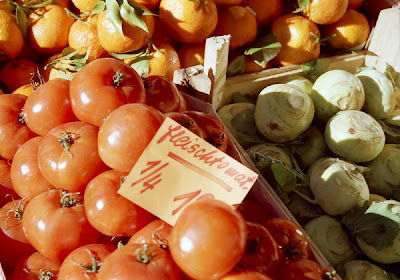.JPG)
it's been drizzling since this morning. but the last days of summer sunshine came back here for a while. no, it wasn’t an indian summer. it was still the summer, i believe. because the summer didn’t really go away.
*
.JPG)
.JPG)
i’m thinking of my posts. i know that they focus too much upon the past. i wish i could write about some ongoing or recent events to share like many bloggers do. my daily life, meanwhile, is as calm as the water of loch ness. other than regular visits to my mother’s and my nearby park, i hardly go anywhere. all the most, i’d go out for shopping occasionally. nothing (but the illness, last year’s) really happens, which doesn’t mean dull, though. as i’d been physically far apart from my mother for too long, i now willingly live near her, even though my children and friends live in tokyo. more importantly, i am happy about my new relationship with my old mother that has been the closest ever since i left the nest when i was eighteen.
*
.JPG)
.JPG)
until i settled down here, my life, as a global citizen, had been filled with surprises, changes and kicks. i couldn’t have imagined i’d live such a quiet life like this. therefore, i am prone to recall my alive-and-kicking days that look as colourful as the photos i took back then. i’ve been left with so many enduring memories of the time i was abroad, absorbing exotic cultures. but this time, my post is unusually not so passé. it is about my latest day-out with shion, my daughter, who was staying here last week, when we visited hieizan (mt. hiei). we’d been saying we should do that in summer over the past three years. at last we made it this summer (hooray!) just before its end.
*
.JPG)
.JPG)
first, shion and i visited a temple in kyoto to clean up my father’s grave, then we headed north. hieizan, a mountain of 848 metres above sea level, straddles kyoto and otsu, which belongs to shiga prefecture. as we moved, we got excited about climbing up hieizan for the first time. well, we were not going to go climbing, so we reached there by cable car and ropeway. no matter how you go, your vertiginous experience of the spectacular view overlooking biwako (lake biwa) should be guaranteed. without second thoughts, we took the easy access. still, that was fun. the air was refreshingly crisp up there. almost no change in colour of leaves was seen so that we could savour the deep summer green. in the mean time, there was a clear sign of shifting season: i could hear no cicada chanting.
*
.JPG)
.JPG)
however, we heard real monks’ chants.
enryakuji of hieizan embodies the long history of japanese buddhism. some 200 related temples, halls and pagodas had been built since the late 8th century, spreading across the mountain. among existing halls, kompon-chudo is the oldest that dates back to the mid 17th century. japanese buddhism has many sects, you know that, maybe? and
tendai is the one enryakuji established in an isolated but comfortably secluded location of hieizan. like zen, tendai monks do lots of zazen: meditation sitting cross-legged to seek spiritual enlightenment. anyone can join them and try a vegetarian course meal.
*
.JPG)
.JPG)
my mother told me that she’d stay there for (instant) ascetic practices as a summer camp when she was a schoolgirl. that sounds great but could’ve possibly been harsh for a city girl like her, too? as for shion and myself, both townies, we did fancy no stoic practice. hiking in the area with ups and downs trained and starved us enough. when we went down to the city and got back to sanjo, it was nearly half past 6 pm. shion offered her pocket money to buy me dinner, which was, actually, a treat of mr piano-man (my ex-husband and her father living with her) for us. near the station, we found a cool and cosy italian eatery that seemed worth the hunger. in fact, that was scrumptious and we enjoyed the garlicky dishes. thank you, mr piano-man!
*
.JPG)
.JPG)
by the way, it is an infamous true story that japanese women have an extra stomach for the last course. so, even we were full, we went on to a piece of pudding in different sorts but both flavoured with powdery green tea, which is kyoto’s main produce. the sweet specialities also showed off kyoto’s culinary-trend-consciousness, i gather. as we left the eatery, we noticed a small flower shop next door to it. although i am passionate about flowers (i even named my daughter after shion 紫苑, a purple aster, that was blooming when she was born in september), i'm quite fussy. but i realised that the flowers displayed at the shop were absolutely my kind.
we went inside and looked around. indeed, each flower was so very tempting. we came up with a basket arrangement to make our belated birthday present to my mother. a young man who was running ouren, the shop, conjured up a dreamy one in a moment or two. i carried it with extra care on the way home, thinking that i really wanted to take all those flowers home. ouren was a lovely find in kyoto. like flowers, kyoto is something that can give colours to my monotonous life now. i love it there every time in every way.
.jpg)
.jpg)
.jpg)
.jpg)
.jpg)
.jpg)
.jpg)
.jpg)
.jpg)
.jpg)
.jpg)
.jpg)
.jpg)
.jpg)
.jpg)
